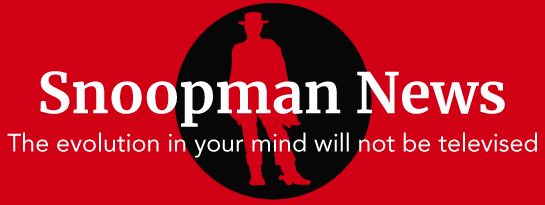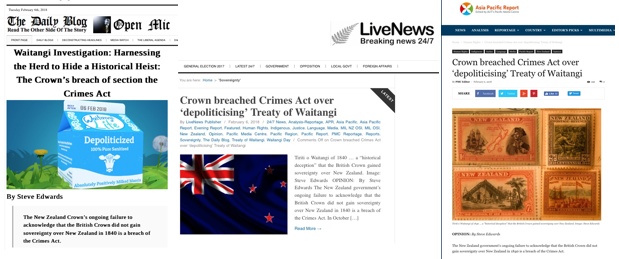How and why the Crown’s marketing of the myth that Māori signed away sovereignty in 1840 breaches the Crimes Act of 1961
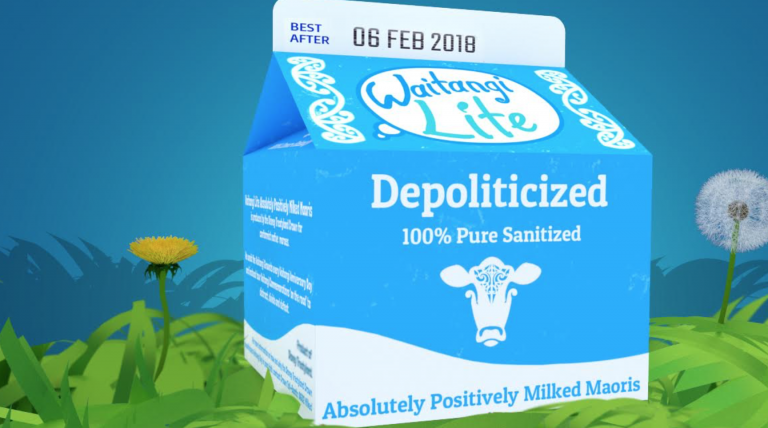
By Steve ‘Snoopman’ Edwards
(Originally published on The Daily Blog, 6 February, 2018)
De-politicizing the Treaty of Waitangi
The New Zealand Crown’s ongoing failure to acknowledge that the British Crown did not gain sovereignty over New Zealand in 1840 is a breach of the Crimes Act.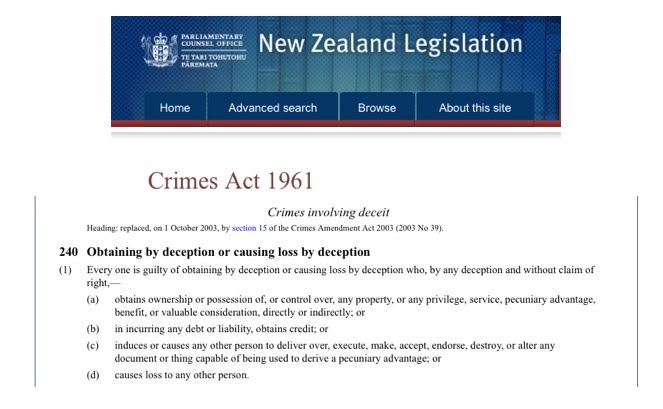
In October 2014, this historical deception was made emphatically clear by the Waitangi Tribunal,[1] who found that Māori did not sign away sovereignty when 512 chiefs, or rangatira, signed Te Tiriti o Waitangi of 1840.[2]
Instead of the Crown spelling out to New Zealanders these essential truths since late 2014, it has deceitfully left intact this country’s fairy-tale creation myth that a cession of sovereignty occurred at Waitangi in those flaggy scenes of 1840. Therefore, the Crown has breached section 240 of the Crimes Act, which covers deception to gain ownership or possession or control over property, or privilege, or to benefit economically, or cause loss to others.[3]
Moreover, since the Waitangi Tribunal’s widely publicized investigation into the United Tribes’ 1835 Declaration of Independence and Te Tiriti o Waitangi, the Crown has pursued a deceptive strategy to avoid admitting that it has no legitimate claim to sovereign authority.
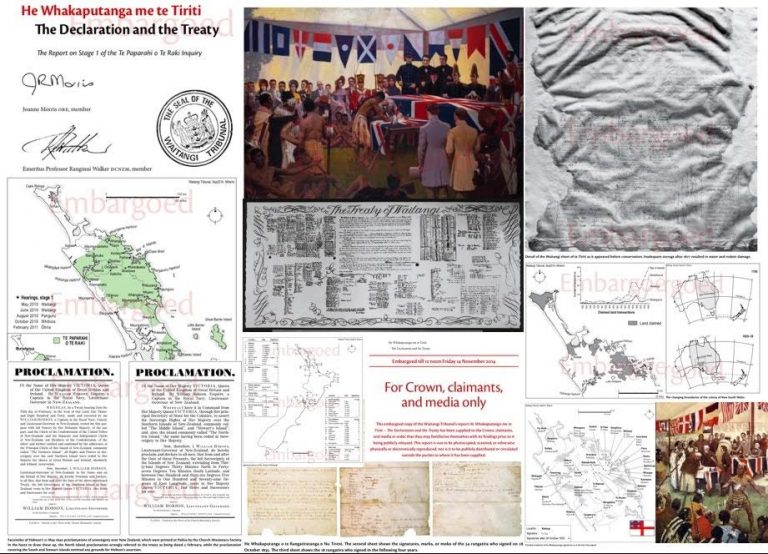
First, then-Minister of Treaty Settlement Negotiations, Chris Finlayson, failed to acknowledge that on 21 May 1840 Lieutenant-Governor William Hobson had fraudulently declared that rangatira of the North Island had ceded sovereignty – or tino rangatiratanga and mana – by signing Te Tiriti o Waitangi. Lieutenant-Governor Hobson’s 21 May proclamation occurred before all treaty signers had signed and in the absence of key iwi and hapū from the interior territories of the North Island![4]Outrageously, Lieutenant-Governor Hobson claimed sovereignty over the South Island on the basis of the Doctrine of Discovery, which had been applied by Captain James Cook, who claimed New Zealand as a possession of King George III.[5]
Finlayson’s ‘failure’ is despite the fact that the Crown had a full-month to prepare its response before the embargo that was lifted on copies sent to the Crown, iwi, hapū and the news media at high noon on 14 November 2014. In his scripted dismissal of the Waitangi Tribunal’s true tale of epic imperial deception, Finlayson brazenly said on Māori Television, “what I’m really focused on is the provision to Ngāpuhi of a just and durable settlement”.[6]
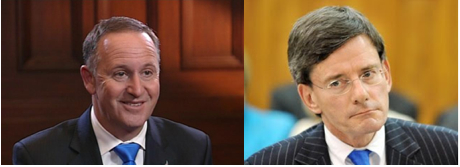
Two days after Finlayson’s out-of-hand dismissal, Key provocatively claimed on a Northland radio station, Te Hiku Radio, on November 19 2014, that New Zealand was settled peacefully and the settlers brought skills and capital.[7] When challenged, Key claimed settlement meant the Treaty signing period, and that settlement was distinct from colonization, which he claimed occurred during a 30 year period from the break-out of war in 1845.[8] Key’s encoded message was that the Crown is not going admit to the myth of cession in 1840.[9] Instead, the Crown was going to hold to the epic slander that ‘rebellious Maoris’ reneged on settling down to the British Crown’s fraudulent sole sovereign status, and the only way for Northland to get capital is via cession of sovereignty through treaty settlements. Key was also implying that colonial-era Māori evidently needed the superior white man’s capital and skills. Then-Attorney General Chris Finlayson failed to censure the Prime Minister for the false statement that New Zealand was settled peacefully, because that would have forced him as Minister of Treaty Settlement Negotiations to explain that sovereignty was gained by swindle, struggle and stealth.
The Crown’s focus on gaming iwi and hapū to settle Treaty breaches and in the process, slyly coerce Māori to cede sovereignty – hapū by hapū, iwi by iwi – advances on the assumption that such deceptions can be pulled off with impunity, permanently and without catastrophic recoil for the British Monarchy.
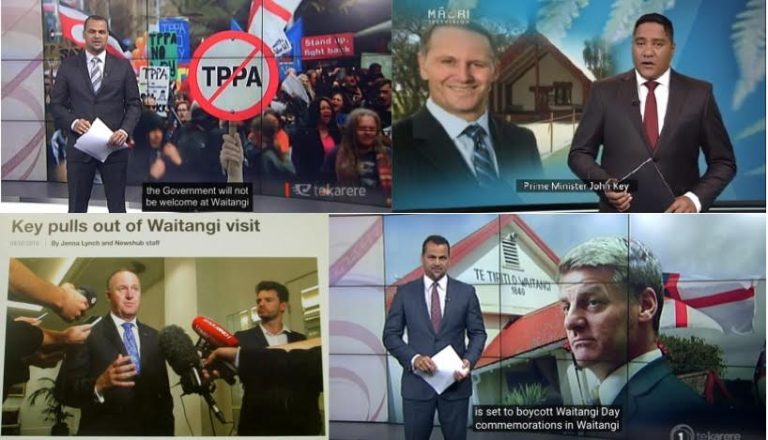
In furtherance of this brazen deception, the Key and English ministries subsequently practiced secret stick and carrot politics designed to stigmatize and discipline the Waitangi host community Te Tii Marae and Te Whare Rūnanga – and Ngāpuhi. To this scheming end, the Crown deployed secret Time Wedge stratagems that were behind the two prime ministers’ boycotting Waitangi in 2016 and 2017. The intention behind boycotting Waitangi was to de-politicize Waitangi Anniversary Day, attack the mana of Ngāpuhi to coerce the Northland iwi to cede sovereignty by settling with the Crown, and corporatize the tribes of Northland through the activation of this malicious scape-goating mechanism.
Mowing over Native Kryptonite Issues
The Waitangi Tribunal’s report – “He Whakaputanga me te Tiriti: the Declaration and the Treaty”[10] – found the evidence resoundingly stacked against the New Zealand Crown’s implausible, fictional claim that Māori signed away the country to a foreign power that was out-numbered by Māori with a ratio of a thousand to one.[11]
When vital consideration of the re-examined accounts of the circumstances that preceded the signings, the discussions rangatira had with Lieutenant-Governor Hobson, his agents and the missionaries, and the sly symbolic cession rituals of empire – are all laid bare – it is evident that rangatira were agreeing to the appointment of a governor to rule over unruly Pākehā, not Māori.[12]
Those Māori that signed were convinced by the sales-pitch of Hobson and Associates that they were signing a treaty with a great power to not only discipline troublesome Pākehā, but also to address land-swindling and protect Māori from foreign invaders in exchange for trade, limited immigration and co-development.
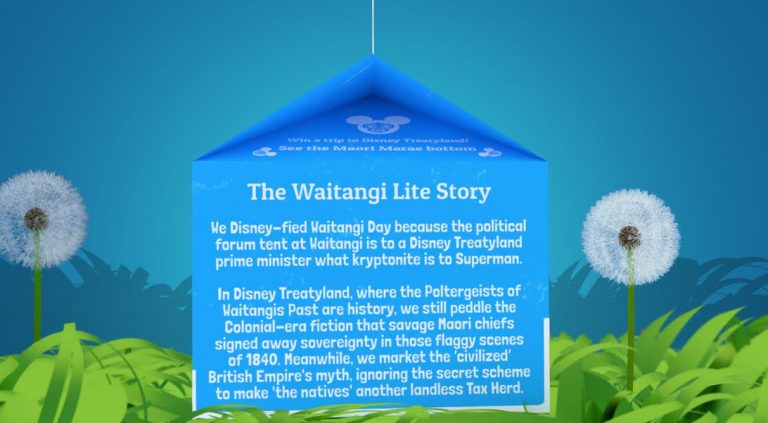
The Waitangi Tribunal noted the crucial assurances of Lieutenant-Governor Hobson his agents and the Protestant missionaries given to rangatira: (1) Queen Victoria would not dispossess Māori of their lands they did not willingly sell; (2) Māori would not become enslaved; and (3) rangatira would still retain their chiefly authority.[13]
The Waitangi Tribunal explored the meanings ‘lost in translation’ between the English and Māori language versions of the Treaty of Waitangi.[14] The Tribunal noted the controversial use of the word Kawanatanga or governorship, in Article One of the Māori language version, which was rendered to mean sovereignty in the English language version, by Church of England Reverend, Henry Williams.[15] The effect was that Kawanatanga was essentially construed to mean that Māori ceded sovereignty over New Zealand forever to the Queen of England![16] Crucially, Māori chiefs thought they retained their chieftainship, or independent authority, with the crucial term – tino rangatiratanga – in Article Two of the Māori language version. Both mana and tino rangatiratanga were regarded as paramount, spiritually sanctioned, inalienable power, as Emily Blincoe noted in her law paper, “The Myth of Cession: Public Law Textbooks and The Treaty of Waitangi”, that endorsed the Tribunal’s report.[17]
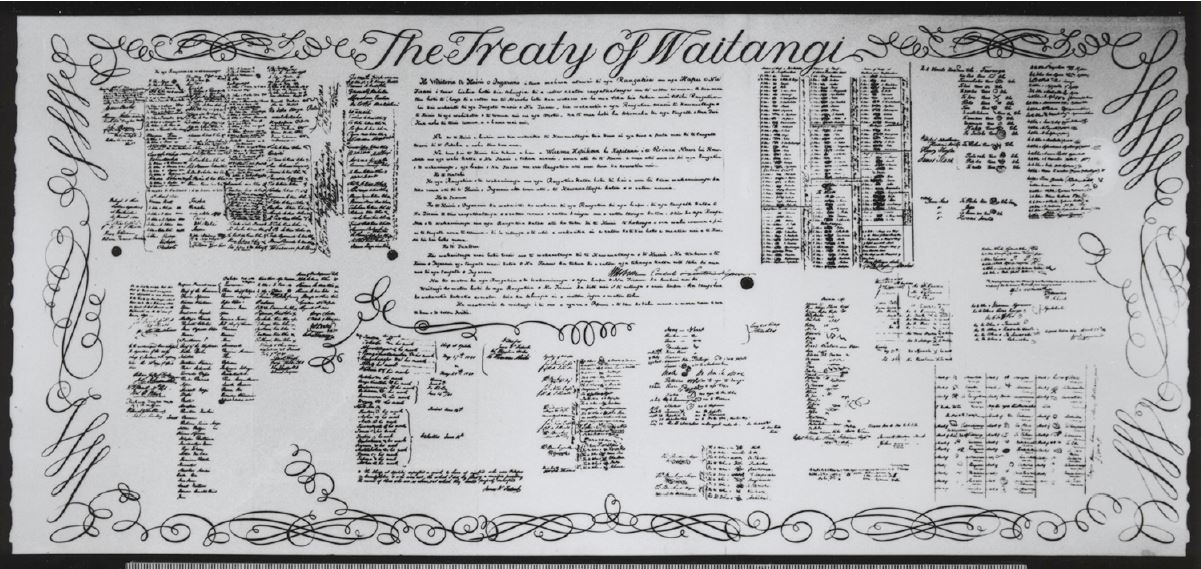
Therefore, the hidden purpose of the 1840 Treaty of Waitangi was to construct the legal justification to take-over Maoriland – without actually spelling that out. When the ‘rebellious natives’ predictably and eventually ‘reneged’ on their side of the bargain – by fighting back – the British Navy and Army would action the Conquest element of the Doctrine of Discovery.[18] This eventuality, about how the conversion of paper sovereignty into sovereignty of substance would occur, was omitted from all versions of the Treaty –
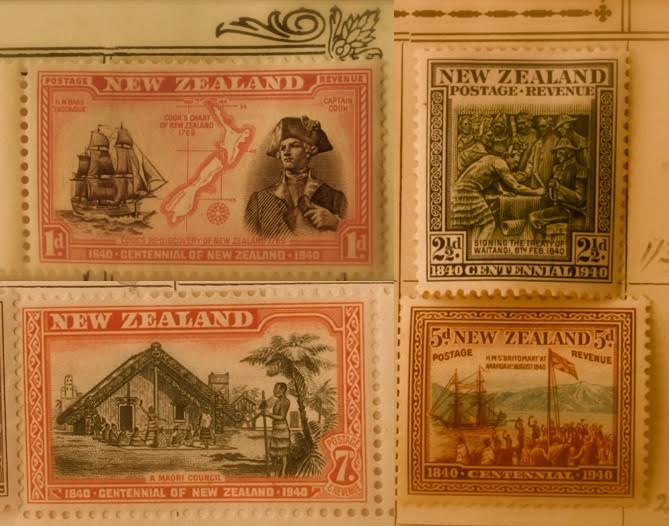
Māori and English. In other words, the Treaty signing rituals were the set-up of this ‘long-game’ that cast unwitting Māori into a wedge of war, where struggles over soil would be fought.[19] To be more precise, the Treaty of Waitangi was a manifestation of the Doctrine of Discovery element of Preemption/European Title.[20] Thus, conquest not only refers to military victories, often legitimized as a ‘just war’. Conquest also refers to the act of First Discovery since indigenous Māori were considered savages who did not have full political rights.
Outrageously – given this epic historic rort – the British Monarch, Queen Elizabeth II, still delegates power over the un-ceded hereditary possessions of Māori, while retaining the ‘reserve power’ to dissolve parliament should a sustained threat to Her Majesty’s Realm of New Zealand emerge. What a right royal privilege!
Time Wedge Waitangi 2016
To protect this right royal privilege, the Key Ministry pursued an over-arching subversive goal: to de-politicize Waitangi Day – through provocation.
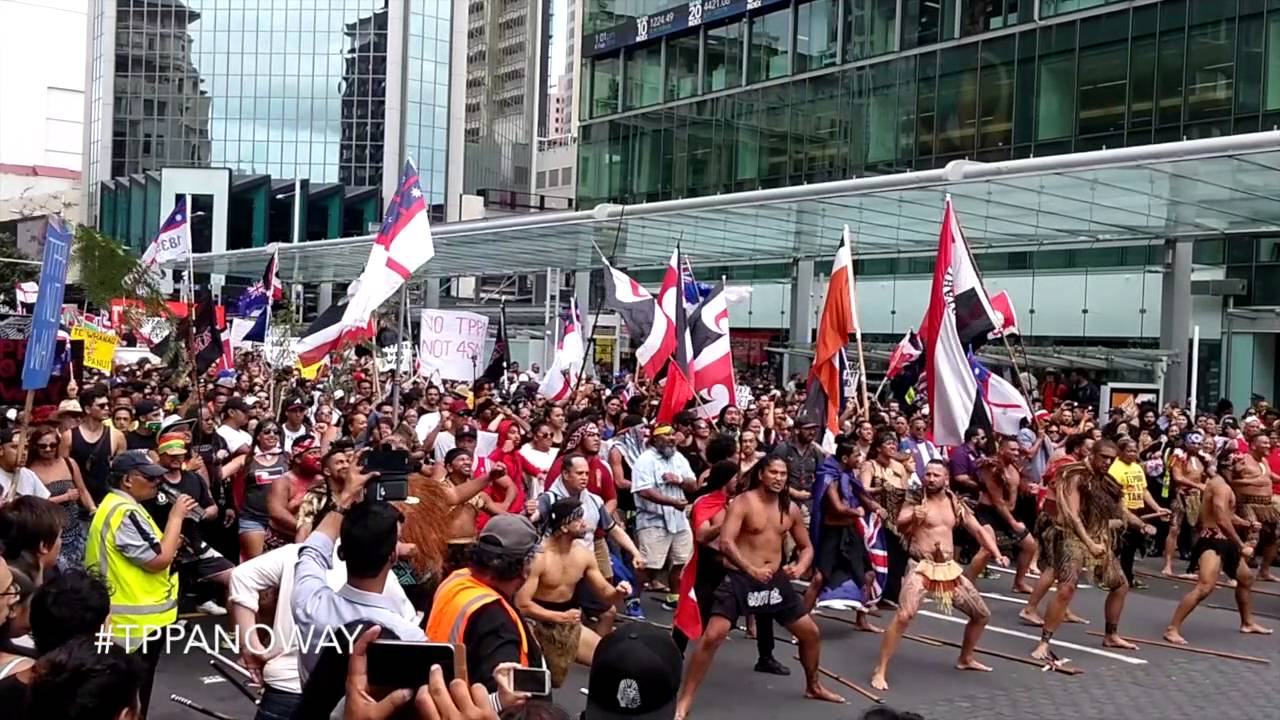
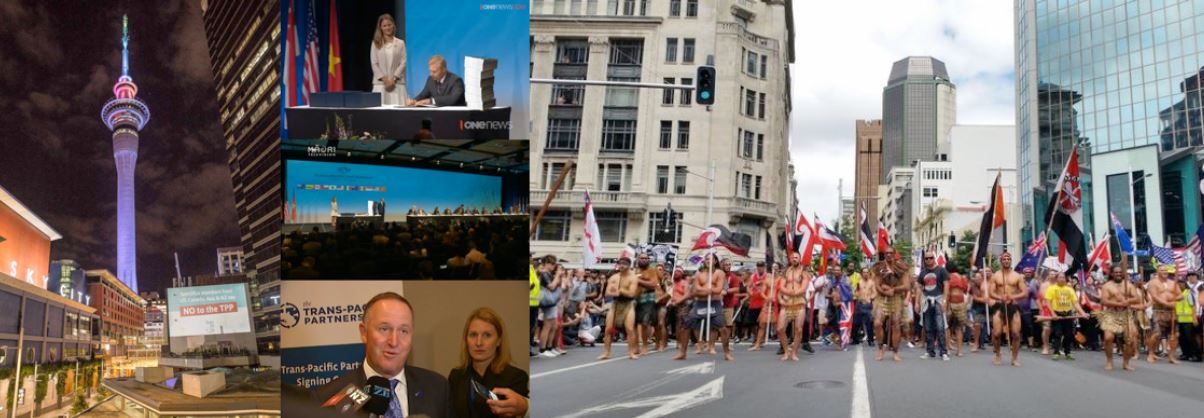
To this devious end, the Key Ministry constructed a secret Time Wedge stratagem, which involved hosting the signing of the Trans-Pacific Rim super treaty two provocative days before Waitangi 2016 – with little notice.[21] The Time Wedge stratagem required then-Prime Minister John Key to scape-goat Māori[22] and anti-TPPA protesters as public enemies.[23] On the day of the positive spin bandwagon TPP Treaty Signing Rituals,[24] then-Prime Minister John Key claimed he was subjected to a ‘gagging order’ at Waitangi, that Te Tii Marae ‘looked Mickey Mouse’, and that Ngāpuhi elders, especially Kingi Taurua, were threatening to incite riots if he were to enter the Waitangi Treaty Grounds.[25] With these stigmatizing statements, Key brazenly dog-whistled to stigmatize Māori with premeditated character assassinations, to create the conditions for a spectacle of emotionally charged argument over a known political hotspot.[26] A hotspot in propaganda terms means a place that is known to arouse intolerance in people along fault lines, or cultural divides, such as race, religion and social status.
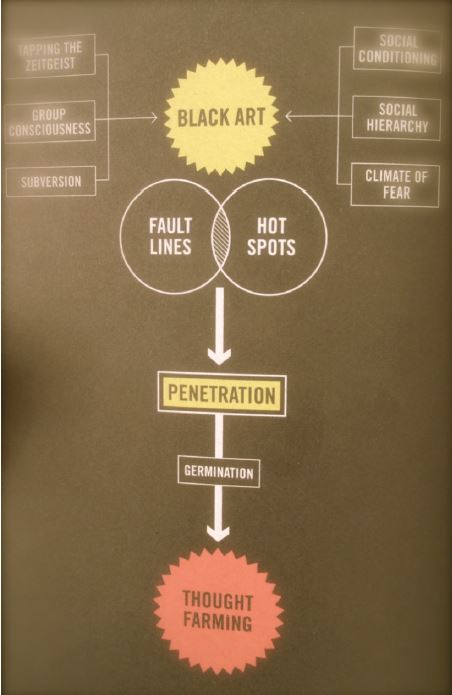
Spinfluence: The Hardcore Propaganda Manual
According to Nick McFarlane’s book, Spinfluence: The Hardcore Propaganda Manual, an attack wolf’s job is to:
“Identify a hot spot of intolerance and fan the flames of bias to ignite radicalization. Intolerance toward the other group’s differences turns fault lines into open divides. Once divided, the Tax Herd is easily conquered.”[27]
Therefore, Key was playing the role of a dirty political attack Wolf.
This wedge tactic relied on seizing control of the one physical dimension at Waitangi open to Team Key to warp – Time. The other three dimensions – Space – were under Te Tii Marae, Te Whare Rūnanga and Ngāpuhi iwi jurisdiction.
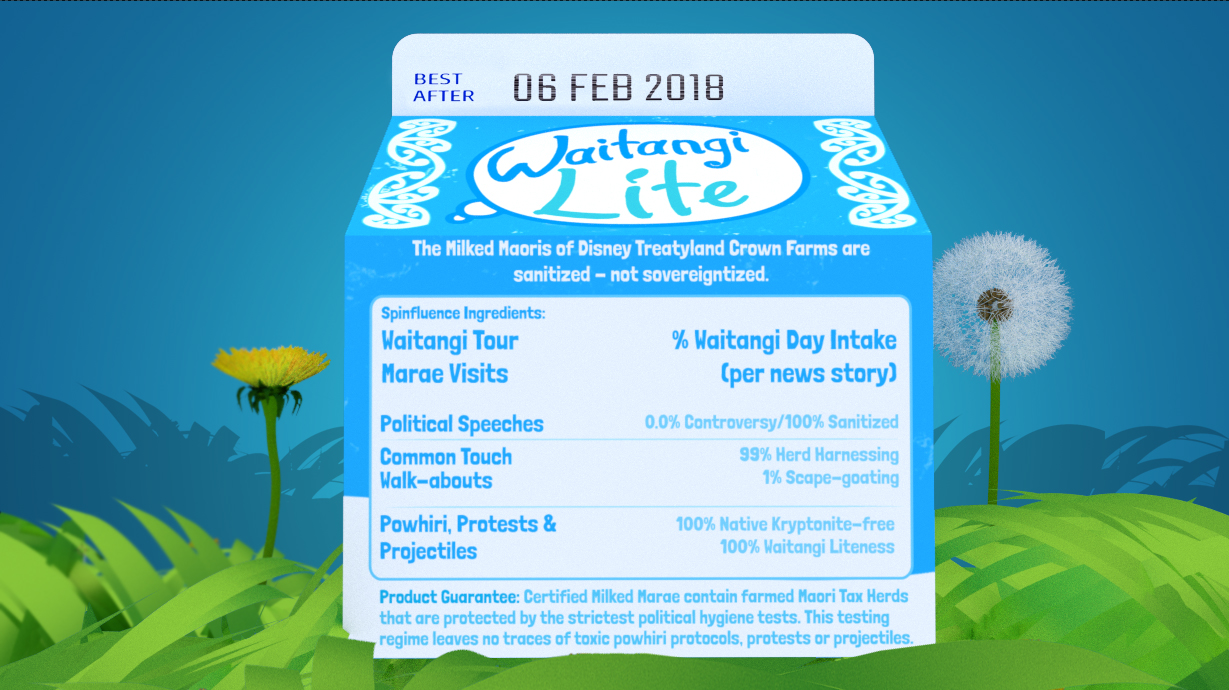
In these constructed circumstances, Key justified his ‘decision’ to chuck out his ‘Always Go to Waitangi Card’. In other words, Key broke his promise that he would always attend Waitangi anniversaries at Waitangi. On February 6, super-rich John Key punted for political touch when he attended a Rugby League Nines tournament.[28] This ‘Go-to-a-Coliseum’ scuttling move anchored a new practice for Neo-Colonial prime ministers – future Waitangis would be ‘away games’, where they could perform positive common touch spinfluence rituals of extra-ordinary people doing ordinary things.
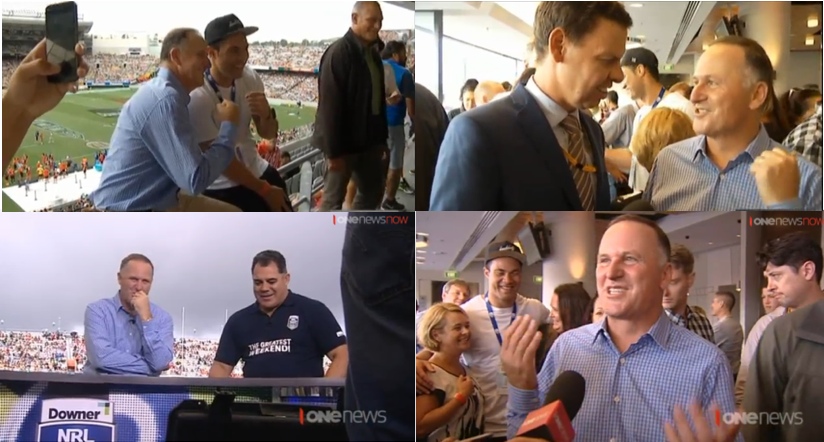
The Wedge of Time stratagem admitted no contradictions and was designed to block debate, thereby serving the simultaneous objectives to evade serious discussion over the TPP Treaty, a draft Māori Constitution sponsored by the Iwi Chairs Forum[29], and to de-politicize Waitangi Day.
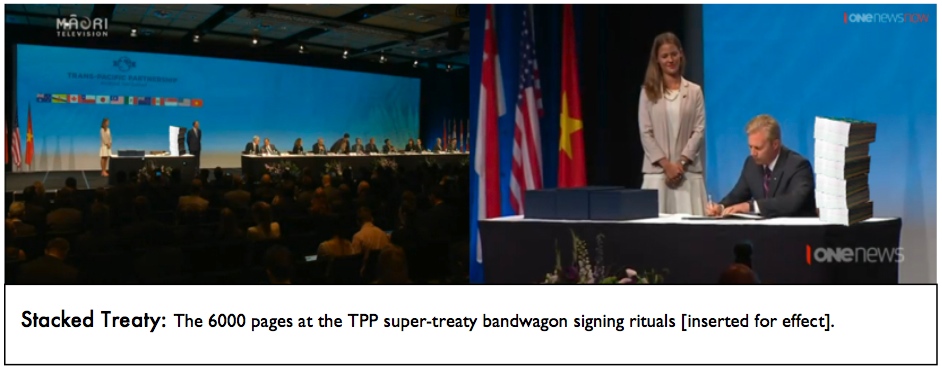
Time Wedge Waitangi 2017
The result of the Key Ministry’s 2016 Time Wedge is that this episode of dirty attack politics became cemented as an unchallenged narrative in the lead-up to Waitangi 2017, as intended. In this way, a full-month before Waitangi weekend, then-Prime Minister Bill English activated a scuttling counter-move because Te Tii Marae Trust committee had, predictably, restricted his political speech to the political forum tent after the powhiri.[30]
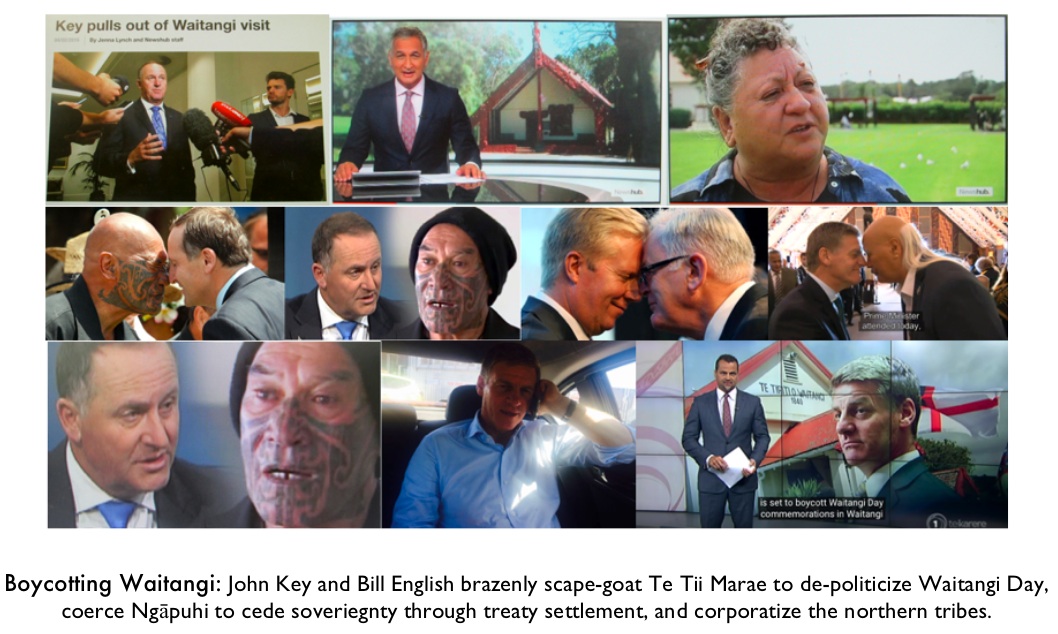
At this point, English said New Zealanders ‘cringe a bit’ each Waitangi Day, and accepted a hui invitation from the Iwi Chairs Forum to meet three days before the Waitangi Anniversary.[31] With the deployment of the sticky word – ‘cringe’ – English & Associates had successfully applied public relations gap-filler to politely and slyly project blame at Te Tii Marae one full month prior to Waitangi Day. There was no genuine engagement by the Neo-Colonial Crown to resolve the issues.[32]
This was the stick approach.
In his press conference at the Copthorne Hotel during the Iwi Leaders Forum conference on February 3 2017, then-Prime Minister Bill English said to reporters during a break that an organized Ngāpuhi could collect $200 million in Treaty Settlements. Such a settlement would help Te Tii Marae become an “organized, cohesive and well-resourced outfit” to make Waitangi Day commemorations a flash fixture, English said.[33] Key’s replacement also claimed iwi all around the country would be “falling all over themselves” to host the government. Therefore, the goal to de-politicize Waitangi Day by taking the commemorations ‘on the road’ was exactly what English acknowledged was a possibility. ACT Party leader David Seymour sowed these seeds for a ‘Waitangi Tour’ the previous Waitangi weekend.[34] By acting as a subversive Thought Farmer, Seymour had attacked Te Tii Marae’s customary practice to host Waitangi Day, stating it was a monopoly. Seymour’s seeds had penetrated the psyches of iwi herds, after successful incubation.[35]
Like his predecessor, English claimed the prime minister’s status had been disrespected to deflect attention from the underlying blackballing stratagem to exclude Te Tii Marae and Te Whare Rūnanga. In this way, English boycotted Waitangi in 2017. His ‘away game’ included a morning visit to Ōrākei Marae in Auckland,[36] where he performed a ‘Respect Pep Talk Ritual’.[37]
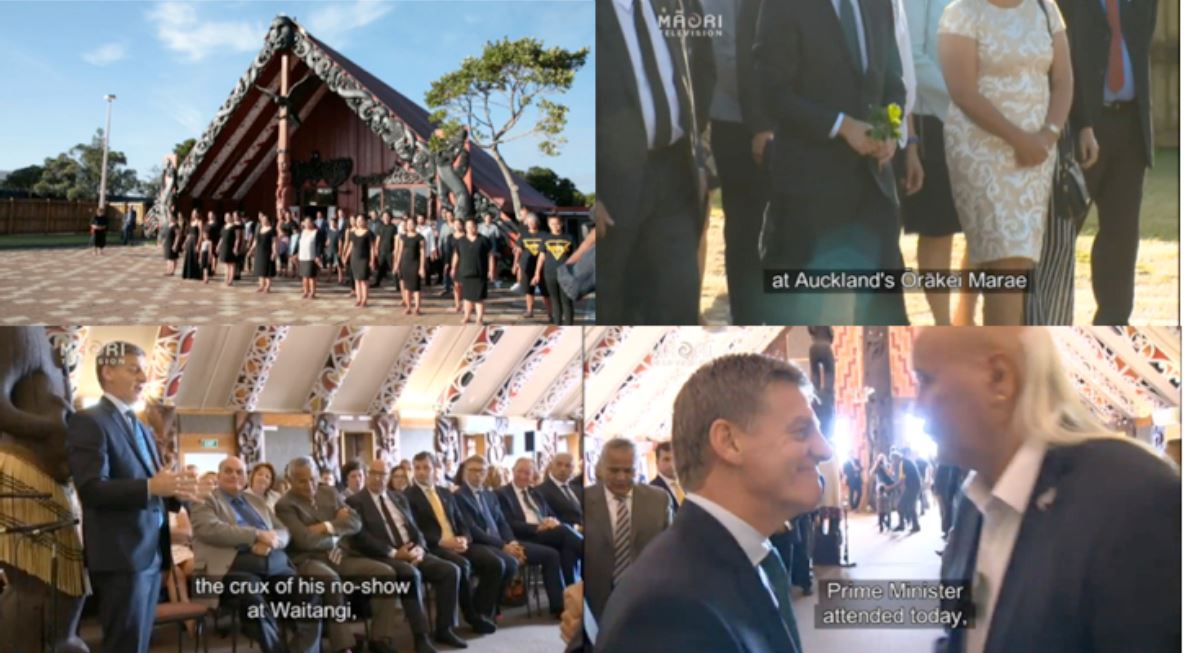
 In the afternoon, English performed common touch spinfluence rituals at Hoani Waititi marae, as he mixed with New Zealand’s Tax Herds of Māori and Pākehā. There also, English slipped into a Crown car to take a pre-arranged phone-call from US President Donald Trump.[38] This Speaking Rights Trumping Ritual showed the Neo-Colonial Crown had re-asserted control over the ritualized symbolic actions.
In the afternoon, English performed common touch spinfluence rituals at Hoani Waititi marae, as he mixed with New Zealand’s Tax Herds of Māori and Pākehā. There also, English slipped into a Crown car to take a pre-arranged phone-call from US President Donald Trump.[38] This Speaking Rights Trumping Ritual showed the Neo-Colonial Crown had re-asserted control over the ritualized symbolic actions.
As Dr Hirini Kaa stated on February 5 2017, English sought to promote a Disney Treaty of 1840, with Disneyesque images of positive race relations in a Disney Treatyland.[39]
The Key and English ministries’ ‘Respect Refrain Ritual’ was a manipulative tactic deployed to pass the political hygiene test. It not only masked the in-built trickle-down racism, which is a kind of institutional racism designed and deployed by political and economic actors who are not necessarily racist themselves, but who act in racist ways at times to manipulate their target audiences. The ‘Respect Refrain Rituals’ also masked the deceptions to gain privileges and economic advantages by causing loss to others – Māori Tax Herds – through fraudulent strategies, tricks and devices.

The attacks on the mana of Ngāpuhi via the iwi’s association with the Waitangi host community in front of national news audiences in the build-up to the Waitangi Anniversaries of 2016 and 2017 were designed to distract, divide and defeat Ngāpuhi and the other northern tribes – Ngāti Kuri, Te Aupouri, Ngāti Kahu, Te Rawawa and Ngāti Wai. In short, the scape-goating was perpetrated to undermine the northern tribes’ mana to lead as chiefly sovereigns in their own territories.
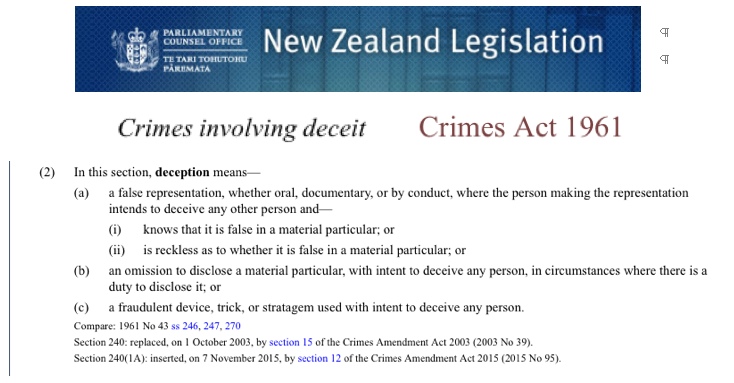
In this way, English fully understood that his ‘respect’ refrain was a furtherance of the Key Ministry’s deceptive character assassination of Te Tii Marae the previous year.
Therefore, I contend this fraudulent dirty political conspiracy was a breach of section 240 of the Crimes Act, which pertains to the fraudulent exploitation of stratagems, tricks, and devices, as I have outlined above.[40]
The Key & English Ministries sought to gain possession and control over privileges, through the control of ritualized symbolic actions and caused loss of mana through deception.
If the Crown were successful in their deceptive, subversive exclusionary blackballing stratagem, the northern tribes would become corporatized, instead of sovereigntized. Likewise, the issue of forging self-determining communities would be buried in un-ceded lands intended to be lost forever, through cession by stealthy coercion, or structural blackmail. The entrenched enslavement of Māori Tax Herds would be sealed by manufactured consent, cunningly constructed upon fast-moving events. And an irksome Disney Treatyland would haunt those Māori who detest the sanitized commemoration of permanent dispossession that has occurred through swindle, struggle and stealth.
Little Great’s Big Carrot and Maoris’ Great Little
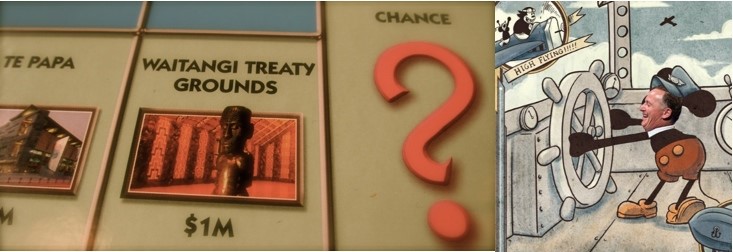
After the National Government lost power in the 2017 election, the Labour Government took up the fake sovereign reigns, with a carrot approach following Ngāpuhi leaders saying they were ready to settle with the Crown in October 2017.
On Monday 14 November 2017 – and with little notice – the new Minister of Treaty Negotiations Andrew Little called for all northland iwi and hapū to attend a hui at Waitangi that coming weekend. Little wanted to engage Northland iwi and hapū in settling with the Crown after the Waitangi Tribunal had finished its multi-year investigation into Ngāpuhi’s claims. In response to Little’s call, Professor Margaret Mutu stated that mana, or the English equivalent of sovereignty, is extinguished by Treaty settlements[41] – an argument the Ngāti Kahu academic made in a 2013 lecture titled, “Te Tiriti o Waitangi in a Future Constitution – Removing the Shackles of Colonization”.[42]
English’s $200 million carrot has grown into Little’s $500 million carrot.[43] Yet, most New Zealanders are led to think the treaty settlements are huge compensations. However, very little land has been returned and the value of the ‘settlements’ is no more than 1% to 2% of the total value of land, resources and other taonga lost.[44]
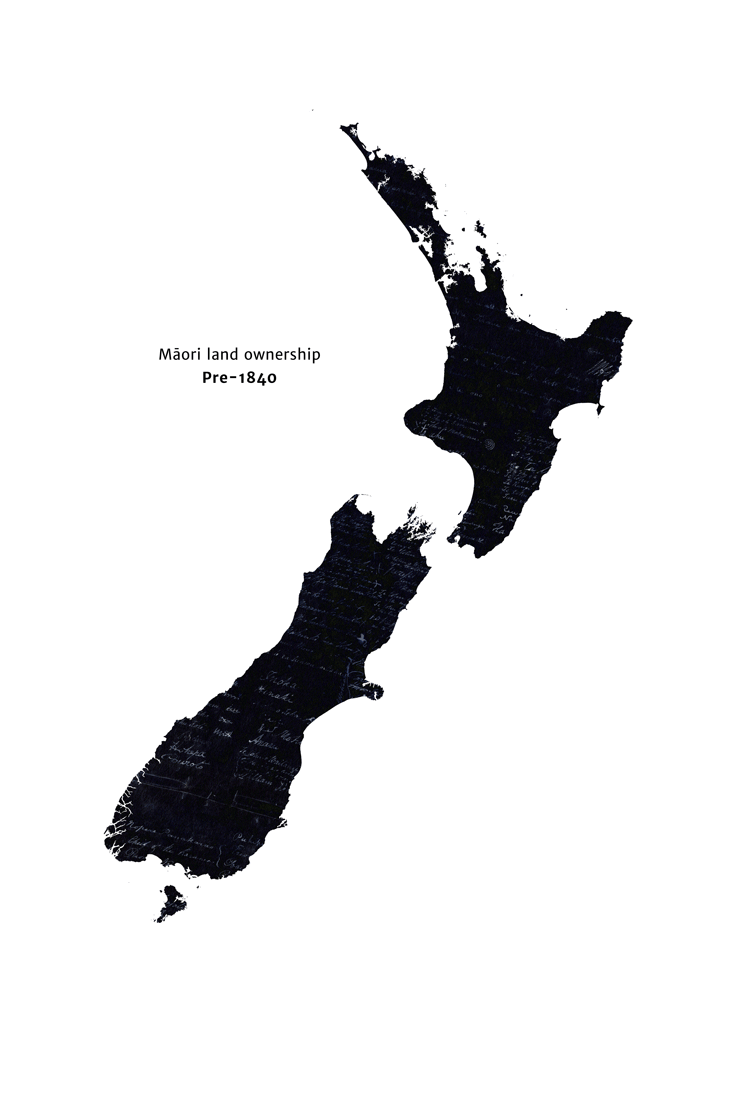
The corporatization of iwi through Treaty settlements is a re-colonization of ‘the natives’ through what I call indigeneity capture, wherein tribes are licensed to manage specified resources, including the fiat Tax Slave-backed currency, subject to what is, in essence – British law – in a New Zealand Neo-Colonial setting. As Māori law scholar Moana Jackson has stated, the reframing of the 1840 Waitangi Treaty “is a story that has more to do with a continuing but covert colonization than it does with acknowledging the truth.”[47]

Prime Minister Jacinda Ardern and Treaty Settlements Negotiations Minister Andrew Little also have an opportune moment to end the deception that the Crown gained sovereignty over New Zealand in 1840, by dispelling this long-standing, state creation myth this coming Waitangi Anniversary Day. The only genuine, legally valid way for the top Pākehā Ministers of the New Zealand Crown to address Waitangi is to admit – unreservedly – that Māori did not cede sovereignty in 1840.
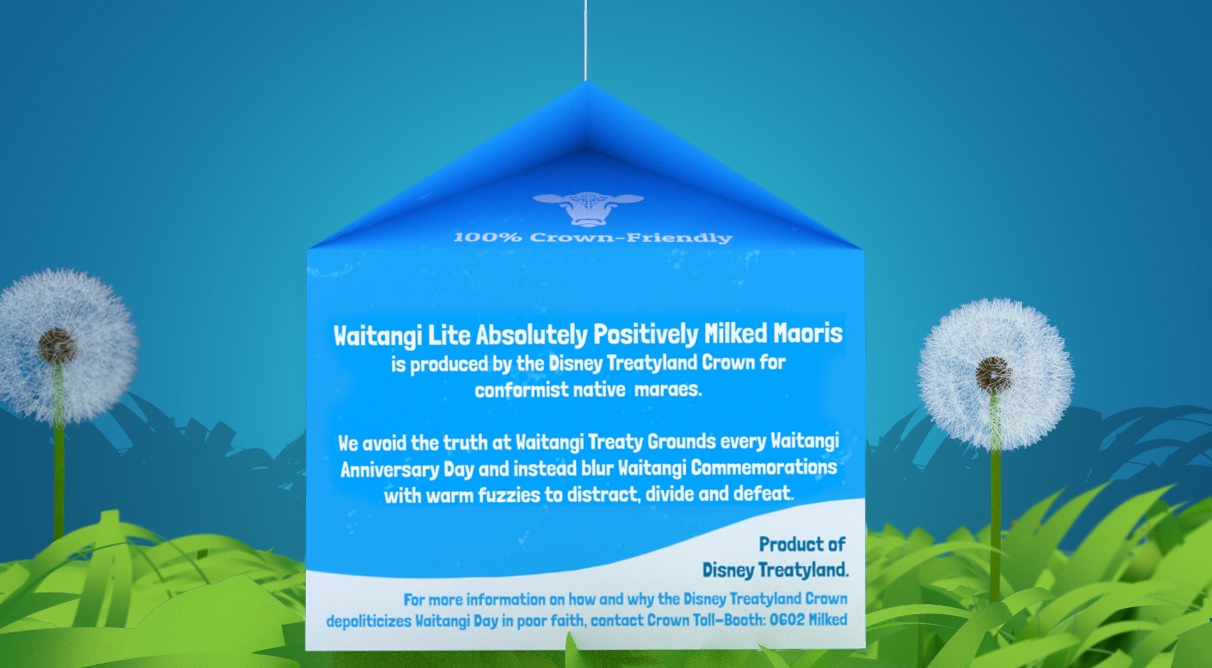
Anything less would be a deceptive, fictional copy of reality.
To maintain this fiction would be unfortunate for the current ‘sole sovereign’ ministers, because it would leave them wide open to charges for crimes of deceit, since the Crown Superior People would be hiding the fact New Zealanders are living in a Make-Real Disney Treatyland.
======
Steve Edwards gained a Masters in Communications Studies at AUT University with First Class Honours in 2013, after completing a study of the news coverage of the Global Financial Crisis and Bank Bail-outs of 2007-2008, titled – It’s the Financial Oligarchy, Stupid. He worked for 14 years as a news and current affairs editor at Māori Television from its launch in 2004.
Graphics Credits: Hamish Cummins, Tai Newman, Kelly Gilchrist, Sarah Spence & Alex Mann. Map animation by Click Suite – pirated from the Fairfax cartel.
See source references below.
=======
Waitangi Investigation: Steve Edwards – Harnessing the Herd to Hide a Historical Heist: The Crown’s breach of the Crimes Act « The Daily Blog
[1] Waitangi Tribunal. (October 2014). He Whakaputanga me te Tiriti: the Declaration and the Treaty. The Report on Stage 1 of the Te Pararahi o Te Raki Inquiry. Wai 1040. Retrieved from: www.waitangitribunal.govt.nz
[2] Forty-three chiefs signed Te Tiriti o Waitangi at Waitangi on 6 February 1840. Most of the treaty sheets that were signed by rangatira were in Maori. The 39 chiefs, who subsequently signed the English version, were all assured by the Crown’s agents that their chiefly authority would remain intact. See: Claudia Orange. (1987). The Treaty of Waitangi. Wellington, New Zealand Allen & Unwin Port Nicholson Press.
[3] Crimes Act 1961. Section 240. Crimes involving deceit 240. Obtaining by deception or causing loss by deception. Parliamentary Counsel Office. New Zealand Neo-Colonial Government. Retrieved from: http://www.legislation.govt.nz/act/public/1961/0043/latest/DLM330275.html
[4] Claudia Orange. (1987). The Treaty of Waitangi, p. 81. Wellington, New Zealand: Allen & Unwin Port Nicholson Press.
[5] Captain Cook was acting in accordance with the British Admiralty’s secret instructions to claim new territories for the British Empire. These secret instructions were not made public until 1928. See: David Wood. (1947). Cook The Explorer, p.25. London: Peter Lunn; A.H. McLintock (Ed.). (1966). An Encyclopedia of New Zealand, Volume I, p. 391. Wellington, New Zealand. R. E. Owen.
[6] Dean Nathan. (17 November 2014). Finlayson dismisses findings of Waitangi Tribunal report. Māori Television. Retrieved from: http://www.maoritelevision.com/news/regional/finlayson-dismisses-findings-waitangi-tribunal-report
[7] Waatea News. (19 November 2014). NZ settlement peaceful says Key. Waatea News.com Retrieved from: http://www.waateanews.com/Waatea+News.html?story_id=ODM3Nw&v=26; Chris Bramwell. (25 November 2014). ‘Peaceful settlement’ view challenged. Radio NZ. Retrieved from: http://www.radionz.co.nz/news/political/260174/%27peaceful-settlement%27-view-challenged
[8] Joe Trinder. (21 November 2014). Denying New Zealand’s colonial past – Mana News. Retrieved from: http://mananews.co.nz/wp/?p=592
[9] Indeed, at the time that Pākehā were plotting the 1st Taranaki War in 1858, Māori had 53 trading ships. See: William Pember Reeves. (1973 [1898)]). The Long White Cloud. Ao Tea Roa, 197. Auckland, NZ: Golden Press. Moreover, the Pākehā settler population could simply not compete with the Māori communal economy. Destroying the Māori communal economy, argued former Radio New Zealand producer Tony Simpson (1979) in, Te Riri Pakeha: The White Man’s Anger, was the driving motivation of key colonialists. See also: Steve ‘Snoopman’ Edwards. (25 April 2017). “The Masonic New Zealand Wars: Freemasonry as a Secret Mechanism of Imperial Conquest During the ‘Native Troubles’ ”. Snoopman News. Retrieved from: https://snoopman.net.nz/2017/04/25/the-masonic-new-zealand-wars/
[10] Waitangi Tribunal. (October 2014). He Whakaputanga me te Tiriti: the Declaration and the Treaty. Retrieved from: www.waitangitribunal.govt.nz
[11] At the time of Treaty signings, there were only 2000 permanent Pākehā residents to 200,000 Māori. (Orange 1987: 6-7).
[12] The Waitangi Tribunal’s findings are consistent with Ngāpuhi Speaks, published in 2012. See: Te Kawariki & Network Waitangi Whangarei. (2012). Ngāpuhi Speaks: He Whakaputanga o te Rangatiratanga o Nu Tireni and Te Tiriti o Waitangi. Ngāpuhi Nui Tonu Claim. Commissioned by Kuia and Kaumātua of Ngāpuhi.
[13] Worried Māori chiefs voiced their concerns. Ngāi Tawake rangatira Rewa spoke prophetic insights when he said, “What do Native men want of a Governor? … Send the man away; do not sign the paper; if you do you will be reduced to the condition of slaves, and be obliged to break stones for the roads. Your land will be taken from you, and your dignity as chiefs will be destroyed.” Excerpt of kōrero. Waitangi Treaty hui of February 5 & 6, 1840. As cited In: Waitangi Tribunal. (October 2014). He Whakaputanga me te Tiriti: the Declaration and the Treaty, p. 358.
[14] Te Tiriti O Waitangi – The Treaty of Waitangi. Footnotes of Maori Text by Prof. Hugh Kawharu. Retrieved from: https://nzhistory.govt.nz/files/documents/treaty-kawharau-footnotes.pdf
[15] The English language version was wrongly registered in London on 15 October 1840 as a translation of the Māori language version. Claudia Orange. (1987). The Treaty of Waitangi, p. 85.
[16] Rev Henry Williams was well aware of the imperfections in the translation. “If Williams had used the terms ‘ko te kingitanga ko te mana’ (as he did in He Wakapūtanga) to translate ‘sovereignty’ in Ture 1 of te Tiriti, and asked the rangatira to cede these powers to the British Crown, it is almost certain that they would have been angry and affronted, and that the negotiations would have failed. Instead, he couched the cession to Queen Victoria as a tuku or release of ‘kāwanatanga”, stated Anne Salmond. Waitangi Tribunal. (October 2014). He Whakaputanga me te Tiriti: the Declaration and the Treaty, p. 464. Moreover, the comparative shortness of the First and Second Articles in the Māori version shows the inadequacy since Māori translations of English uses more words.
[17] Emily Blincoe. (2015). “The Myth of Cession: Public Law Textbooks and The Treaty of Waitangi”, p. 8-9. Faculty of Law, Victoria University. Retrieved from: http://researcharchive.vuw.ac.nz/xmlui/bitstream/handle/10063/5021/paper.pdf?sequence
[18] The Doctrine of Discovery was a secret piece of international law reached between European nations in the 15th Century when they were forming empires, and was designed to mitigate the chances of competing nations making expensive war with each other. It was thought it would be easier to gain territory off indigenous peoples’ cast as ‘savages’ rather than from their more technologically even European competitors. Scholar Professor Robert J. Miller, who published his findings in a book titled, Native America, Discovered and Conquered, identified ten elements of the Discovery Doctrine. The ten Doctrine of Discovery elements are: (1) First Discovery; (2) Actual Occupancy and Current Possession; (3) Preemption/European Title; (4) Indian Title; (5) Tribal Limited Sovereign and Commercial Rights; (6) Contiguity; (7) Terra nullius; (8) Christianity (9) Civilization; and (10) Conquest. SEE: Robert J. Miller (2006). Native America, Discovered and Conquered: Thomas Jefferson, Lewis & Clark Manifest destiny. p.10. Westport, Connecticut; USA: Praeger; Professor Robert J Miller. (March 30, 2012) The Doctrine of Discovery: The International Law of Colonialism, Lewis & Clark Law School. Indigenous Peoples Forum on the Impact of the Doctrine of Discovery. Retrieved from: http://doctrineofdiscoveryforum.blogspot.co.nz/2012/03/doctrine-of-discovery-international-law.html; “The Still Permeating Influence of the Doctrine of Discovery in Aotearoa/New Zealand: 1970s-2000s – Foreshore and Seabed”, p. 237-239. In: Robert J. Miller, Jacinta Ruru, Larissa Behrendt and Tracey Lindberg. Discovering Indigenous Lands: The Doctrine of Discovery in the English Colonies, p. 6-8. Oxford, UK: Oxford University Press.
[19] Steve ‘Snoopman’ Edwards. (25 April 2017). “The Masonic New Zealand Wars”. Retrieved from: https://snoopman.net.nz/2017/04/25/the-masonic-new-zealand-wars/
[20] Ivison, D., Patton, P. & Sanders, W. (2000). Political Theory and the Rights of Indigenous Peoples. Cambridge, United Kingdom: Cambridge University Press; Silver, M., Pugh, M. & Harry, D. (2003). The Leech and the Earth Worm. [Motion Picture]. Nevada, USA: IPCB Production. Retrieved from: http://www.ipcb.org/publications/video/files/film_project.html
[21] Heta Gardiner. (7 January 2016). Disappointment as TPPA announcement comes from overseas. Retrieved from: http://www.maoritelevision.com/news/regional/disappointment-tppa-announcement-comes-overseas; Online News Team. (7 January 2016). Twelve countries expected to sign up to TPPA 2 days before Waitangi Day. Maori Television Retrieved from: http://www.maoritelevision.com/news/national/twelve-countries-expected-sign-tppa-2-days-waitangi-day; NEWSHUB. (07 January 2016). TPPA to be signed in NZ – report http://www.newshub.co.nz/home/new-zealand/2016/01/tppa-to-be-signed-in-nz—report.html#axzz3wYL25HDo; Newshub. (12 January 2016). TPP expected to be signed in Auckland. http://www.newshub.co.nz/politics/tpp-to-be-signed-in-auckland-2016011216#axzz4F4AdoM4D; Frank Macskasy. (14 January 2016). The Mendacities of Mr Key # 15: John Key lies to NZ on consultation and ratification of TPPA. Retrieved from: https://fmacskasy.wordpress.com/2016/01/14/the-mendacities-of-mr-key-15-john-key-lies-to-nz-on-consultation-and-ratification-of-tppa/;
[22] Audrey Young. (4 February 2016). John Key throws Waitangi visit in doubt as he calls Te Tii Marae group ‘Mickey Mouse’. http://www.nzherald.co.nz/nz/news/article.cfm?c_id=1&objectid=11584568; RNZ. (4 February 2016). Waitangi trustee’s message to Key: ‘Be a man’. Retrieved from: http://www.radionz.co.nz/news/national/295751/trustee%27s-message-to-key-%27be-a-man%27; Dean Nathan. (4 February 2016). Emotions may still flair despite PM not attending Waitangi. Te Kaea, Māori Television. Retrieved from: http://www.maoritelevision.com/news/regional/emotions-may-still-flair-despite-pm-not-attending-waitangi; Jenna Lynch and Newshub staff. (04/02/2016). Key pulls out of Waitangi visit. http://www.newshub.co.nz/home/new-zealand/2016/02/pm-pulls-out-of-waitangi-visit.html; Jo Moir. Andrew Little accuses John Key of a lack of leadership over not going to Waitangi. (4 February 2016). http://www.stuff.co.nz/national/politics/76578090/Andrew-Little-accuses-John-Key-of-a-lack-of-leadership-over-not-going-to-Waitangi; BBC News (4 February 2016). New Zealand PM to skip Waitangi Day event amid TPP angerhttp://www.bbc.com/news/world-asia-35489838; Otago Daily Times. (4 February 2016). Key won’t go to Waitangi. http://www.odt.co.nz/news/politics/371987/key-waitangi-group-mickey-mouse
[23] RNZ. (4 February 2016). Protests will disappoint Aucklanders – PM. http://www.radionz.co.nz/news/national/295718/protests-will-disappoint-aucklanders-pm; Corin Dann. (5 February 2016). TPP signing a ‘parallel universe’ to noisy and colourful protests. https://www.tvnz.co.nz/one-news/new-zealand/tpp-signing-a-parallel-universe-to-noisy-and-colourful-protests; Patrick Gower. (4 Feb 2016). Trans-Pacific Partnership Signing, Protest & Waitangi. 3News.
[24] Nick McFarlane. (2013). Spin 7.6. Bandwagon. Spinfluence: The Hardcore Propaganda Manual. UK: Carpet Bombing Culture.
[25] OneNews. (4 February 2016). John Key on Waitangi Day: ‘I won’t go when elders are encouraging violence. Retrieved from: https://www.tvnz.co.nz/one-news/new-zealand/john-key-on-waitangi-day-i-wont-go-when-elders-are-encouraging-violence; RNZ. (4 February 2016). Waitangi trustee’s message to Key: ‘Be a man’. Retrieved from: http://www.radionz.co.nz/news/national/295751/trustee%27s-message-to-key-%27be-a-man%27; Dean Nathan. (4 February 2016). Emotions may still flair despite PM not attending Waitangi. Te Kāea, Māori Television. Retrieved from: http://www.maoritelevision.com/news/regional/emotions-may-still-flair-despite-pm-not-attending-waitangi; Kingi Taurua. (4 February 2016). ‘I am going to encourage protest to keep John Key off this marae’. Retrieved from: https://www.tvnz.co.nz/one-news/new-zealand/john-key-on-waitangi-day-i-wont-go-when-elders-are-encouraging-violence; Jo Moir. (October 3 2016). Stoush brewing over whether or not John Key is welcome at Waitangi’s lower marae. Retrieved from: http://www.stuff.co.nz/national/politics/84908245/Stoush-brewing-over-whether-or-not-John-Key-is-welcome-at-Waitangis-lower-marae
[26] ‘Dog-whistling’ is a public relations industry tactic to produce messages that work like a high-pitched whistle that will only be fully audible to those directly targeted for persuasion, while others will not be offended. The tactic is deployed to amplify peoples’ fears, frustrations, or prejudices, and transform them into anger, as investigative journalist Nicky Hager reported in his 2006 book, The Hollow Men: A Study in the Politics of Deception. The Manipulators, Chapter 10. Nelson, NZ: Craig Potton Publishing. See also: RNZ. (4 February 2016). Waitangi trustee’s message to Key: ‘Be a man’. Retrieved from: Retrieved from: http://www.radionz.co.nz/news/national/295751/trustee%27s-message-to-key-%27be-a-man%27; Audrey Young. (4 February 2016). John Key throws Waitangi visit in doubt as he calls Te Tii Marae group ‘Mickey Mouse’. Retrieved from: http://www.nzherald.co.nz/nz/news/article.cfm?c_id=1&objectid=11584568; Jo Moir. Andrew Little accuses John Key of a lack of leadership over not going to Waitangi. (4 February 2016). Retrieved from: http://www.stuff.co.nz/national/politics/76578090/Andrew-Little-accuses-John-Key-of-a-lack-of-leadership-over-not-going-to-Waitangi; BBC News (4 February 2016). New Zealand PM to skip Waitangi Day event amid TPP anger. Retrieved from: http://www.bbc.com/news/world-asia-35489838; Otago Daily Times. (4 February 2016). Key won’t go to Waitangi. Retrieved from: http://www.odt.co.nz/news/politics/371987/key-waitangi-group-mickey-mouse
[27] Nick McFarlane. (2013). The Black Art 10.5 Faultlines and Hotspots. Spinfluence: The Hardcore Propaganda Manual.
[28] Newshub. (6 February 2016). Waitangi Day celebrations. Retrieved from: https://www.youtube.com/watch?v=InqYUAgDd9k; Marika Hill. (7 February 2016). Prime Minister John Key target of flying-dildo Waitangi protest. Retrieved from: http://www.stuff.co.nz/national/76650854/Prime-Minister-John-Key-target-of-flying-dildo-Waitangi-protest
[29] Moana Jackson. (24 September 2017). How about a politics that imagines the impossible? Retrieved from: https://e-tangata.co.nz/news/how-about-a-politics-that-imagines-the-impossible
[30] Traditionally, Crown Ministers have feared the political forum tent more than the poltergeists of Waitangis-Past – the powhiri, protests and projectiles. That’s because the political forum tent is to a Neo-Colonial prime minister what kryptonite is to Superman or Superwoman. It’s where the complexity, context and conflicts of important issues get presented in easy-to-get ways. See: 1News. (9 January 2017). ‘Not acceptable to me’ – Bill English won’t go to Waitangi after being refused speaking rights. Retrieved from: https://www.tvnz.co.nz/one-news/new-zealand/not-acceptable-me-bill-english-wont-go-waitangi-after-being-refused-speaking-rights
[31] 1News. (9 January 2017). ‘Not acceptable to me’ – Bill English won’t go to Waitangi after being refused speaking rights. https://www.tvnz.co.nz/one-news/new-zealand/not-acceptable-me-bill-english-wont-go-waitangi-after-being-refused-speaking-rights
[32] Te Karere. (Jan 9, 2017). Maori academic critical of Bill English Waitangi Day boycott. TVNZ. Retrieved from: https://www.youtube.com/watch?v=J21XQ2rAbX4; Jan 10, 2017 Editorial: English gives up on Waitangi too soon. Retrieved from: http://www.nzherald.co.nz/nz/news/article.cfm?c_id=1&objectid=11779107
[33] Audrey Young. (3 February 2017). Prime Minister Bill English believes decision not to go to Waitangi will help Nga Puhi on Treaty. Retrieved from: http://www.nzherald.co.nz/nz/news/article.cfm?c_id=1&objectid=11794414; Jo Moir. (3 February 2017). The PM’s annual attendance at Waitangi on our national day could be finished. Retrieved from: http://www.stuff.co.nz/national/politics/89069345/The-PMs-annual-attendance-at-Waitangi-on-our-national-day-could-be-finished
[34] David v Jacinda: Spread the love – take Waitangi Day on the road. David Seymour. (February 7 2016). Retrieved from: http://www.stuff.co.nz/national/politics/76626738/david-v-jacinda-spread-the-love–take-waitangi-day-on-the-road
[35] Leftist Maori commentator says Seymour’s idea to take Treaty celebrations away from Waitangi ‘makes sense’ Cannot be reproduced without permission. Retrieved from: https://www.nbr.co.nz/article/leftist-maori-commentator-says-seymours-idea-tour-treaty-makes-sense-ck-198396; The far right ACT Party’s role is to seed politically risky ideas to test public opinion for the near-far right National Party, to reduce the risk of losing voter support for the overtly pro-corporate parties. Nicky Hager. (2006). The Hollow Men: A Study in the Politics of Deception. Craig Potton Publishing. SEE also: Chris Keall. (January 9, 2017).
[36] At Ōrākei Marae, Bill English fondly recalled its Māori land rights history like it was his Waitangi Lite happy place. English also mentioned the government’s ‘failure’ of Māori and Pākehā tamariki. English’s concern for children at a time when persistent child poverty, afflicts one third of New Zealand children – or 300,000 tamariki – was false. In his role as finance minister, he has overseen the hidden state policy of structural unemployment, wherein the government maintains unemployment at around 6% of the workforce in order to undermine wage and salary earners’ pay bargaining power, so that big businesses can keep labour costs suppressed. Talisa Kupenga. (6 February 2017). Breakfast over business at Ōrākei Marae. Te Kāea. Retrieved from: http://www.maoritelevision.com/news/regional/breakfast-over-business-orakei-marae; For the missing context of economic warfare underpinning poverty, see: Barry, Alistair. (2002). In a Land of Plenty. [Motion Picture]. Vanguard Films. Retrieved from http://www.nzonscreen.com/title/in-a-land-of-plenty-2002 [In 5-part video segments]; Barry, Alistair. (1995). Someone Else’s Country. [Motion Picture]. Vanguard Films. Retrieved from http://www.nzonscreen.com/title/someone-elses-country-1996; Klein, Naomi. (2007). The Shock Doctrine: The Rise of Disaster Capitalism, p.7. Camberwell, Australia: Penguin Books; Whitecross, M & Winterbottom, A. (Directors) & Eaton, A. (Producer). The Shock Doctrine 2009 [Motion picture] Retrieved from: https://www.youtube.com/watch?v=v6yceBTf_V
[37] Simon Wilson. (Feb 9 2017). PM Bill English gave two speeches on Waitangi Day. Both were remarkable. Both were almost entirely ignored | The Spinoff. https://thespinoff.co.nz/politics/09-02-2017/pm-bill-english-gave-two-speeches-on-waitangi-day-both-were-remarkable-both-were-almost-entirely-ignored/
[38] Patrick Gower. (06/02/201). Bill English should crack a cold one after Trump/Waitangi. Retrieved from: http://www.newshub.co.nz/home/politics/2017/02/patrick-gower-bill-english-should-crack-a-cold-one-after-trump-waitangi.html
[39] Hirini Kaa (February 5, 2017). Waitangi delivers conflict, tension, discomfort. And it is essential for our collective soul. Retrieved from: https://thespinoff.co.nz/politics/05-02-2017/waitangi-delivers-conflict-tension-discomfort-and-it-is-essential-for-our-collective-soul/; Hirini Kaa. (January 9 2017). Why cringe at Waitangi? Retrieved from: http://www.stuff.co.nz/national/politics/88252097/Hirini-Kaa-Why-cringe-at-Waitangi
[40] Crimes Act 1961. Section 240. Crimes involving deceit 240. Obtaining by deception or causing loss by deception. Parliamentary Counsel Office. New Zealand Neo-Colonial Government. Retrieved from: http://www.legislation.govt.nz/act/public/1961/0043/latest/DLM330275.html
[41] Te Kāea. (14 November 2017). Interview with Professor Margaret Mutu. Māori Television.
[42] Professor Margaret Mutu. (22 April 2013).Te Tiriti o Waitangi in a Future Constitution Removing the Shackles of Colonization 2013 Robson Lecture Napier. Te Rūnanga-ā-Iwi o Ngāti Kahu and the University of Auckland. Retrieved from: http://www.converge.org.nz/pma/shackles-of-colonisation.pdf
[43] Andrew Little signals fresh start for Ngapuhi negotiations – NZ Herald. Retrieved from: http://www.nzherald.co.nz/northland-age/news/article.cfm?c_id=1503402&objectid=11944580
[44] By 1996 and by conquest, laws of subjugation and other forms of classed-based, racially-prejudiced Pākehā economic imperialism, Māori land holdings were reduced to about 5.5% of the total New Zealand land mass, or 3.743 million acres out of 66.4 million acres. SEE: Mason Durie (2005). Ngā Tai Matatū: Tides of Māori Endurance. Oxford University Press, Melbourne. SEE also: Ngā Tamatoa: 40 Years On. Retrieved from: http://www.maoritelevision.com/tv/shows/pakipumeka-aotearoa-new-zealand-documentaries/S01E001/nga-tamatoa-40-years-on
[45] By 1865, the Crown and the New Zealand Company had swindled Māori out of almost 99% of the South Island, and eventually Southern Māori were left with 0.003% of the South Island landmass. Map animation by Click Suite based on video viewable at the He Tohu exhibition at the National Library in Wellington. Andy Fyers, August 2 2018. Fairfax. Treaty of Waitangi: What was lost.
“Maori land loss, 1860-2000. New Zealand History. New Zealand Government.” Retrieved from http://www.nzhistory.net.nz/media/interactive/maori-land-1860-2000
[44] Waitangi Tribunal. (October 2014). He Whakaputanga me te Tiriti: the Declaration and the Treaty, p. 362. Retrieved from: www.waitangitribunal.govt.nz
[45] Emily Blincoe. (2015). “The Myth of Cession”, p. 44.
